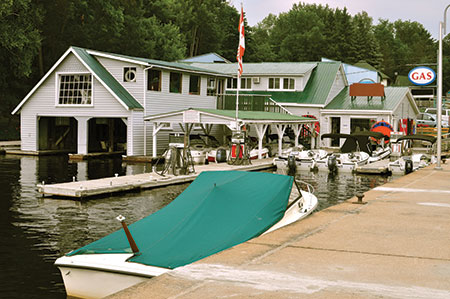Question: Listed RHH wire
Is Type RHH wire in EMT, with a two-hour fire rating Listed as circuit integrity cable? Is this acceptable because it is Listed RHH wire?
Answer
Fire resistive cables are Classified under the category “Fire Resistive Cables” (FHJR). The UL guide information can be found on page 233 of the 2001 White Book. Cables under this category are intended for installation in specific Electrical Circuit Protective Systems (FHIT) – located on page 232 of the 2001 White Book – as marked on the product or the smallest unit container. An example of the marking is noted below. This information is required to be provided along with the Classification Mark:
FIRE RESISTIVE CABLES
FOR USE IN ELECTRICAL
CIRCUIT PROTECTIVE SYSTEMS
SYSTEM NO.________SEE UL FIRE
RESISTIVE DIRECTORY
UL is currently aware of one design (System No. 25) that uses RHH cable and EMT. This electrical circuit protective system can be found on page 1074 of the 2002 Fire Resistance Directory, Vol. 2. As indicated in the design, only a specific RHH cable that is additionally Classified as “Fire Resistive Cable” can be used, and it must be marked as indicated for design No. 25. This design can also be viewed on the UL Online Certifications Directory atwww.ul.com/database. Additionally, Circuit Integrity Cable, marked “CI” (maximum voltage) applies to fire alarm cable per Article 760 of the NEC. See pages 34-35 the 2001 White Book. There is at least one manufacturer who has Listing.
Question: Assigned ampacity for wires and cables
Does UL allow an assigned ampacity for wires and cables that is greater than that assigned by the NEC when the wires are part of a UL Listed product?
Answer
Internal wiring, cords and cables of UL Listed products may be found suitable for a higher ampacity than that permitted by Table 310.16 of the 2002 NEC. Suitability of wiring is determined through temperature and other appropriate testing at the greater ampacity level. These tests require temperature measurements on the conductor, conductor insulation, its terminations, the equipment, etc., to ensure the temperature limits of the materials are not exceeded.
Question: Luminaires
What are the differences and applications of Type IC, inherently protected, and Type Non-IC luminaires?
Answer
The UL guide information for incandescent recessed luminaires (fixtures) (IEZX) located on page 41 of the 2001 White Book defines these types of luminaries as follows: TYPE IC Luminaire – Luminaires marked “TYPE IC” may be installed such that insulation and other combustible materials are in contact with, and over the top of, the luminaire. Type IC luminaires are provided with thermal protection to deactivate the lamp should the luminaire be mislamped.
INHERENTLY PROTECTED LUMINAIRE – A recessed luminaire which does not exceed temperatures greater than 90 degrees C on outside surfaces, even when covered a with insulations and mislamped or overlamped.
TYPE NON-IC LUMINAIRE – A recessed luminaire that is intended to be installed in an uninsulated or insulated ceiling (or wall), with all insulation kept a minimum distance of 3 inches from the sides of the luminaire and not placed over the luminaire such that it would entrap the heat produced by the luminaire. Other combustible materials are spaced, except at the points of support, at least ½ inch from the luminaire.
Type Non-IC luminaires are provided with thermal protection to deactivate the lamp(s) should insulation be placed over or in contact with the luminaire. For proper heat dissipation,Type Non-IC luminaires are intended to be installed in a cavity as follows: If not marked with any spacing information, the luminaire is intended to be installed not closer than ½ inch from any surface forming the cavity behind the recessed portion of the luminaire and not closer than 1 inch from the adjacent luminaries.











Find Us on Socials